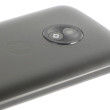Band 48

(CBRS)
Citizen Broadband Radio Service
A radio frequency band covering the range of 3550 - 3700 MHz in the United States.
3550 - 3700 MHz is a relatively high frequency range, meaning this band does not penetrate buildings and terrain well, and is unsuitable for long distances over land.
It operates in a unique three-tier sharing system. Tier 1 is for US Military coastal and Navy RADAR, as well as certain satellite communications. These users always have priority, but are rarely using all of the band in any given location. Therefore Tier 2 and 3 users can use the band when- and where-ever it's not being used by Tier 1 users. A central database controls, in real time, who can use which part of the band, when, and where.
Companies can pay the FCC for licenses to operate in Tier 2, which simply means they have priority over Tier 3 (anyone without a license.) This is called a Priority Access License (PAL).
See: FCC
Tier 3 operates as unlicensed spectrum, much like Wi-Fi. In the context of CBRS, this is called General Authorized Access (GAA), to distinguish it from PAL.
Tier 2 (PAL) may provide more reliable service, but both PAL and GAA are useful for adding capacity and improved data speeds to 5G networks.
Mobile companies can deploy 4G LTE or 5G NR technology in band 48, using it augment their existing networks. They can do this using both indoor and outdoor antennas, which have different specific rules for this band.
There are several different ways 4G or 5G mobile service can be deployed in band 48.
Companies can deploy relatively standard mobile service in this band with Tier 2 licenses. It is an unpaired band, meaning there are not separate frequencies for transmitting versus receiving. Therefore, in order to deploy standard LTE or NR, it must be the TDD variety.
See: TDD
Alternately, companies can use asymmetric Carrier Aggregation together with other LTE or NR bands. In this configuration, another band is the main band, and band 48 is used to add capacity to the downlink (download) direction only.
See: Carrier Aggregation
Band 48 is a subset of the larger band 77, which may be used when 5G NR is deployed in this band.
See: Band 77
Where entities are operating band 48 networks under Tier 3 (unlicensed) rules, they can used LTE-U, which lets LTE technology operate in unlicensed radio spectrum much like Wi-Fi.
See: LTE-U
Last updated Jun 14, 2022 by Rich Brome
Editor in Chief Rich became fascinated with cell phones in 1999, creating mobile web sites for phones with tiny black-and-white displays and obsessing over new phone models. Realizing a need for better info about phones, he started Phone Scoop in 2001, and has been helming the site ever since. Rich has spent two decades researching and covering every detail of the phone industry, traveling the world to tour factories, interview CEOs, and get every last spec and photo Phone Scoop readers have come to expect. As an industry veteran, Rich is a respected voice on phone technology of the past, present, and future.









